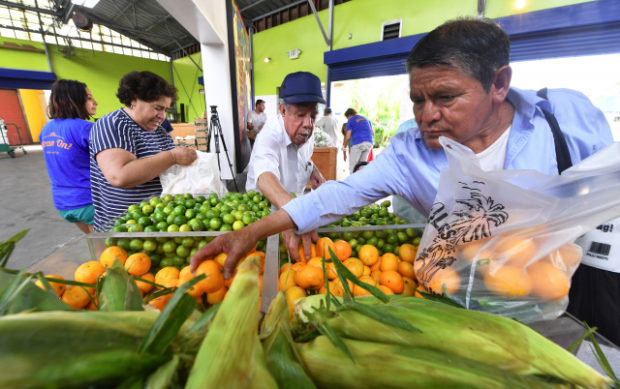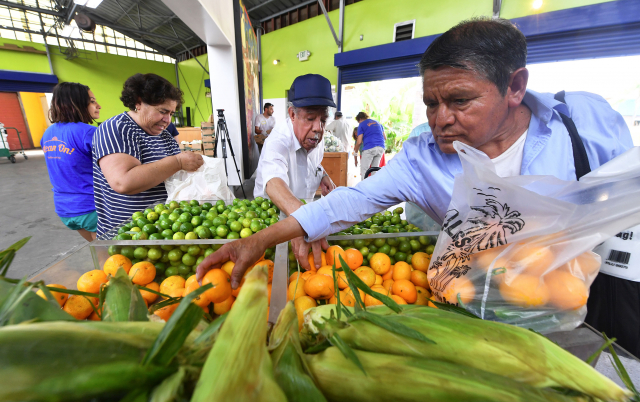
Delighted to take home food that others would discard, Herlinda Mendoza looks excitedly over the bounty of fresh produce spread out before her.
“I like all of it, all of it. The grapes, the onions,” Mendoza says in a soft grandmotherly voice as she and her daughter Laura man shopping carts, waiting to fill them up.
“You have to be grateful for everything you are given.”
The women are in a warehouse in a poor neighborhood of Los Angeles, one of many venues where a non-governmental organization called Food Forward is working to salvage some of the mountains of food that Americans throw away every year and give it to the needy.
On this particular day, the NGO and a community center distributed 15,000 pounds (6,800 kilos) of fruit and vegetables that wholesalers would otherwise have thrown out.
There was nothing wrong with all that food. It was doomed only because more fresh deliveries were on the way and room had to be made, or because the produce had some slight bruise or other minor defect.
Every week, Food Forward collects some 353,000 pounds of surplus produce from people’s fruit trees, farmers’ markets and LA’s Wholesale Produce Market.
It then donates the food to hundreds of organizations that help the needy throughout southern California.
“With a program like this, where people can actually understand the two-sided connection of food waste and hunger, you start to see some change,” said Rick Nahmias, the NGO’s founder.
‘No restrictions’
This particular twice-monthly handout is held in a warehouse in Watts, one of the poorest and roughest neighborhoods of Los Angeles, where most residents are black or Latino.
“They can have two or more bags, and they fill up, and there is no restrictions,” said Sheila Thomas, who works for the community center allied with Food Forward at this warehouse.
The center also helps people find work and offers assistance to young people applying to college. It even helps them with paying their tuition.
As they all wait in line, Herlinda and Laura chat and joke around with other Latinos. All told, some 500 people are expected to come by on this particular day and take home some fresh produce.
The spread at the center looks like any other market, with everything neatly organized.
When it comes time for the customers to choose, their neediness becomes more apparent.
They nervously use both hands as they try to stuff as much as they can in bags as if they were participating in a TV game show race against the clock.
“This is really good for the heart,” Herlinda says, with a cucumber in her hand.
Later, she holds an ear of corn. “Do you know what I make with this? Atol,” she says, referring to a hot beverage made from corn flour.
“This food is so good. I don’t understand why they were going to throw it away,” said 61-year-old Salvadoran woman Paula Ramirez.
She saves a lot of money thanks to this charity, and she needs to: her husband uses a wheelchair and they get by on a small pension.
“He doesn’t work and neither do I,” she said.
‘A lot to share’
A study by the National Resources Defense Council has estimated that each American chucks out an average of more than 400 pounds of food per year.
Multiply that by America’s population of 327 million. It is an astronomical amount of waste.
An orange tree in somebody’s backyard might yield 200 to 300 pounds of fruit per year, according to Nahmias, who adds that he has heard of grapefruit trees yielding as many as 1,400 pounds in a year.
“That’s a lot of fruit for one family or one person to use. So in every which way, there is a lot to share,” he said as a team working with him picked oranges in the courtyard of a school.
The volunteers, using a fruit-picking device with shears at the end of a long rod, fill crate after crate and end up with 149 of them — oranges that will presumably be eaten, not thrown out. NVG
RELATED STORIES:
South Korea cuts food waste with ‘pay as you trash’
France tops food sustainability charts as world leader against food waste












































